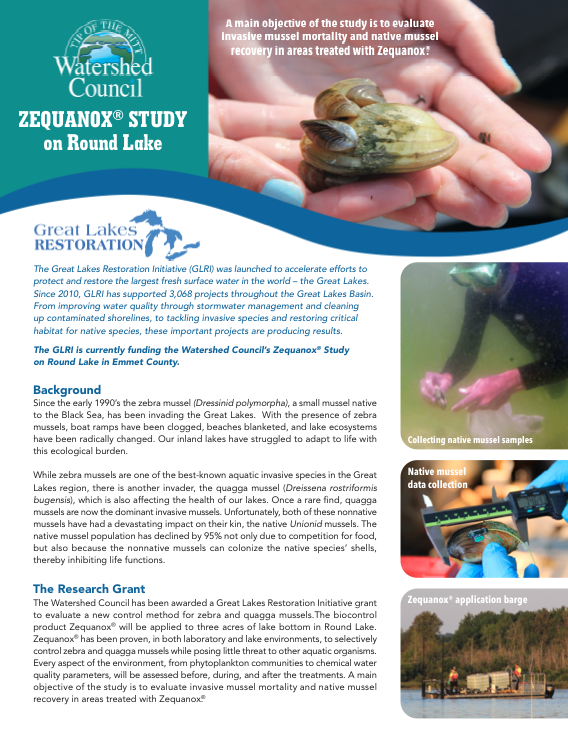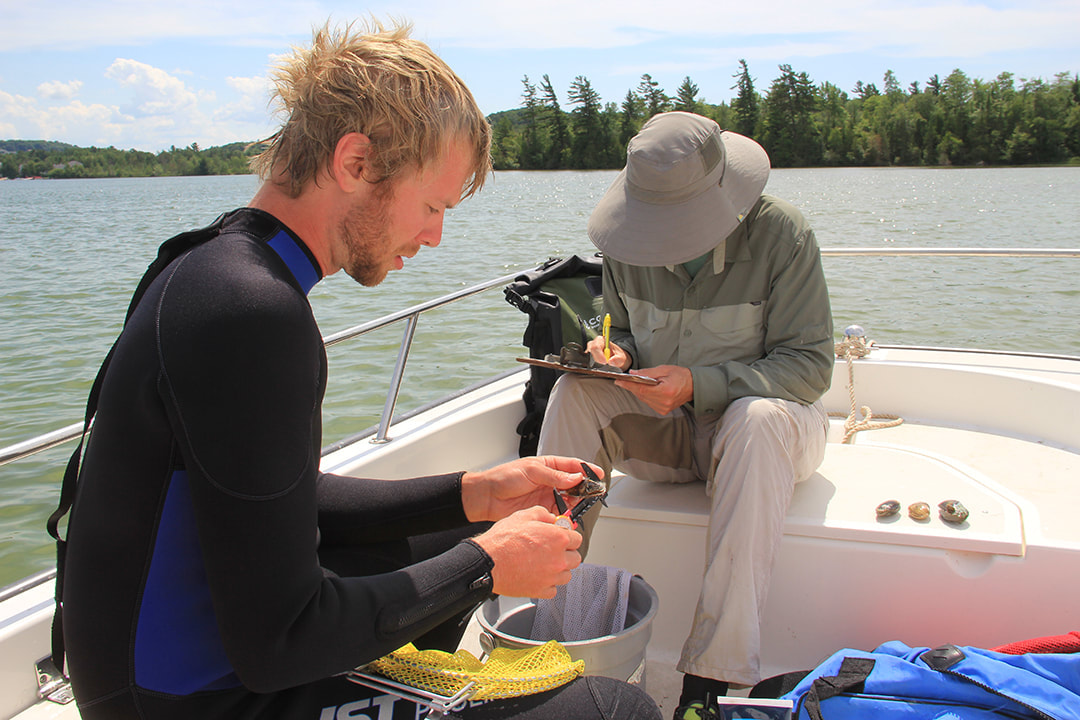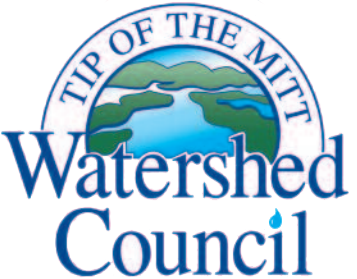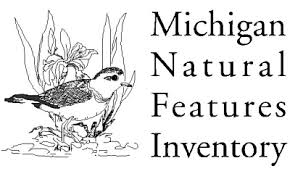The Zequanox® Study
|
Background
Since the early 1990’s the zebra mussel (Dressinid polymorpha), a small mussel native to the Black Sea, has been invading the Great Lakes. With the presence of zebra mussels, boat ramps have been clogged, beaches blanketed, and lake ecosystems have been radically changed. Our inland lakes have struggled to adapt to life with this ecological burden. While zebra mussels are one of the best-known aquatic invasive species in the Great Lakes region, there is another invader, the quagga mussel (Dreissena rostriformis bugensis), which is also affecting the health of our lakes. Once a rare find, quagga mussels are now the dominant invasive mussels. Unfortunately, both of these nonnative mussels have had a devastating impact on their kin, the native Unionid mussels. The native mussel population has declined by 95% not only due to competition for food, but also because the nonnative mussels can colonize the native species’ shells, thereby inhibiting life functions. |
|
The Research Grant
The Watershed Council has been awarded a Great Lakes Restoration Initiative grant to evaluate a new control method for zebra and quagga mussels.The biocontrol product Zequanox® will be applied to three acres of lake bottom in Round Lake. Zequanox® has been proven, in both laboratory and lake environments, to selectively control zebra and quagga mussels while posing little threat to other aquatic organisms. Every aspect of the environment, from phytoplankton communities to chemical water quality parameters, will be assessed before, during, and after the treatments. A main objective of the study is to evaluate invasive mussel mortality and native mussel recovery in areas treated with Zequanox®. |
Zequanox® is not a chemical; rather it is composed of dead bacterial cells. The common soil bacterium Pseudomonas flourescens is grown in Bangor, Michigan, by Marrone Bio Innovations. The product is desiccated prior to shipment, which kills the bacteria. Once the dead bacteria are ingested by zebra or quagga mussels, they interfere with the mussels’ digestive processes,eventually killing them.
In the industrial sector, Zequanox® has been used since its approval by the U.S. Environmental Protection Agency (US EPA) in 2012 to clear zebra mussel build up from intake pipes and other infrastructure. In 2014, the US EPA approved an expanded label that included use in open waters. To date, no open water applications have occurred, although some studies have used curtain barriers to evaluate the product in lakes. The Watershed Council’s project will take this control method to the next level, integrating control into the lake ecosystem. Although the project area is small when compared to lake size, this research will contribute to the body of knowledge surrounding invasive mussel control, moving us one step closer to a day when lake ecosystems can be free of these invaders.
In the industrial sector, Zequanox® has been used since its approval by the U.S. Environmental Protection Agency (US EPA) in 2012 to clear zebra mussel build up from intake pipes and other infrastructure. In 2014, the US EPA approved an expanded label that included use in open waters. To date, no open water applications have occurred, although some studies have used curtain barriers to evaluate the product in lakes. The Watershed Council’s project will take this control method to the next level, integrating control into the lake ecosystem. Although the project area is small when compared to lake size, this research will contribute to the body of knowledge surrounding invasive mussel control, moving us one step closer to a day when lake ecosystems can be free of these invaders.
The project is being conducted in partnership with the United States Geologic Survey, Michigan Natural Features Inventory, and the University of Michigan Biological Station, along with other organizations. By building partnerships at the local, state and federal level, we can accomplish these types of large restoration projects.
Project partners include:
|
The Great Lakes Restoration Initiative (GLRI) was launched to accelerate efforts to protect and restore the largest fresh surface water in the world – the Great Lakes. Since 2010, GLRI has supported 3,068 projects throughout the Great Lakes Basin. From improving water quality through stormwater management and cleaning up contaminated shorelines, to tackling invasive species and restoring critical habitat for native species, these important projects are producing results.
The GLRI is funding the Watershed Council’s Zequanox® Study on Round Lake in Emmet County. |










